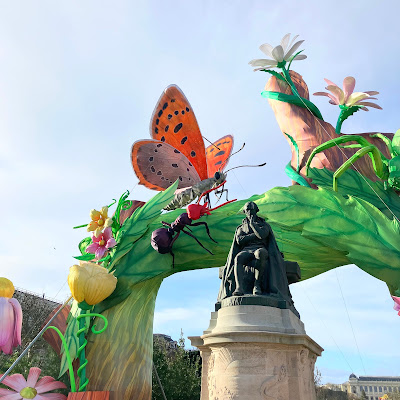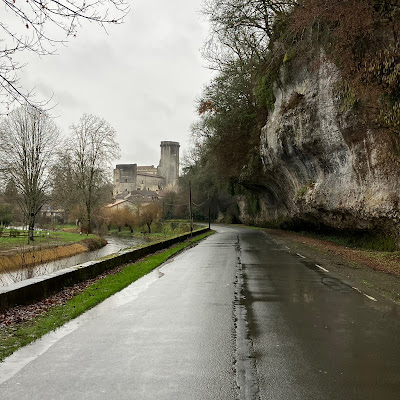What could Grandpa’s slippers and a small village in France possibly have in common? Hand in hand and sole to soul, they share a history of struggle, adaptation through innovation, and sometimes a magical rebirth.
A unique local style of slipper, the pantoufle Charentaises was created in our region in the 1600’s. At the time the local economy was predominately agricultural. Farms were small and folks scraped out a simple living. Hamlets were close together so resources could be shared. Nothing was ever allowed to go to waste. The idea for making slippers took off when someone came up with the idea to use off-cuts from military uniforms, the waste from local paper mills, and a locally made felt used as liners for wooden clogs. Everyone wore clogs and these thick fabric inserts were a godsend. Small attic workshops grew into a thriving industry. By the early 1800’s around 20,000 people were employed in making slippers that were shipped out all across France. With a steady income from dependable jobs, folks had money to build homes and support local businesses. Store keepers built apartments above their thriving shops, factory workers built new housing at the entrances to the villages and the nearby farmers improved their properties. Bourdeilles is a good example of this population and housing boom - the population of Bourdeilles was around 4,000 by the mid-1800’s. Village streets were lively with grocers, butchers, bakeries, bicycle shops, barrel makers, etc. Everyone clomped around in their wooden clogs and everyone had at least two pairs of pantoufle Charatiases, one for for the work day and one for evenings in front of the fireplace. At the end of those busy days villagers swept up the front stoop and closed up freshly painted shutters.
But time and styles moved on and the lumpy, brown, plaid design of the Charentaises didn’t change a bit. Desperate when folks stopped wearing wooden clogs, creative thinkers added a rubber sole to the felted slippers. For now, the industry held on. The footwear that was so comforting in front of the fireplace was now— thanks to the rubber soles—sturdy enough go outside to collect wood, feed the chickens or pop into the grocery. And more! The iconic slippers were favored in stately homes to reduce the sound of servants’ footsteps. They were reputed to be the preferred shoes of jewelers at their bench, the coarse fabric collecting any gold or gem fragments.
But stately homes came on hard times and the younger generation didn’t want to be caught dead in Grandpa’s ugly pantoufle Charentaises. Slipper sales dropped to nearly nothing. One by one local factories closed. Young folks moved away, houses were left empty when the grandparents moved out. The shutters along main street stayed closed and unpainted. The street sweeper drank a wee bit too much and disappeared. The population of Bourdeilles dropped to around 500 tired souls.
However there has always been a few die hard supporters of the homely Charentaises. These stubborn businesses struggled to get away from the image of frumpy and plaid and yet keep the classic style of the slipper —“they are not sad our slippers! They can be happy!”
In 2005 the governor of the region organized a design competition at the top Paris design schools. One hundred and seventy six snappy pairs of slippers were presented during Paris fashion week followed by a runway show at the Eiffel Tower. Fashionistas started to take notice. Folks wanted in on the campy, nostalgic, made-in-France heritage. Nowadays brightly colored slippers are lined up right next to the traditional plaid (because Grandpa still wants his low-key, wear all day footwear). In 2006 the local slipper was granted regional protection from the National Industrial Property Institute. It is just the eighth time this prestigious French protection has been awarded. Two other items from the Nouvelle Aquitaine that have been awarded the same regional protection are Limoges porcelain and Aubusson tapestries. Being on the list guarantees that only the slippers made in a fixed geographic area, and to certain standards, can use the name pantoufle Charentaise. The industry is climbing back with about 200 people fabricating slippers in the region. And like Grandpa’s slippers that cling to the essential basics of their heritage, our small villages are coming back into style with younger families. Shutters are once again opening and closing with the rhythm of the day. Struggles with the vagaries of history continue for a small village, but for now there is a lively independent soul trying to take hold.






































